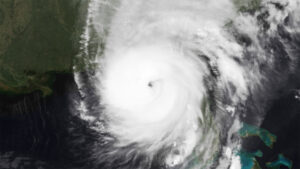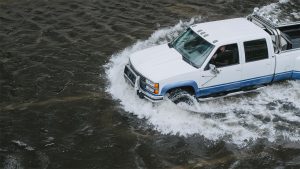
If you have already joined the Patreon page, feel free to scroll down to today’s newsletter. For everyone else, we have some updates to share with you about our new Patreon page.
My team and I have decided that to continue releasing the same quality and quantity of content that you have come to know and love, some changes were needed. Beginning on October 1, our daily newsletters and videos will be available for early release on Patreon for a small monthly subscription fee. In addition to the daily newsletters and videos, you’ll also be getting some new content and perks exclusive to Patreon subscribers, including the daily news digest that Peter reads every morning, a private community forum where you can ponder life’s mysteries with other subscribers, and live Q&A sessions for our premium subscribers. Signing up for the Patreon will ensure you’re getting the most current and up-to-date content, before anyone else sees it. You can learn more about the different tiers and offerings at the link below.
We value all members of this community and understand that adding a paid subscription (even if it’s well worth it) isn’t in the cards for everyone. To accommodate those readers and ensure you still get your dose of Peter Zeihan, we will be offering the newsletters and videos on a delay for free. While you might not get the most current information (and you’ll be missing out on all the new bonus content), your morning routine doesn’t have to change.
Okay, now that all the housekeeping is out of the way, let’s move on to today’s video…
Hurricane Helene is heading toward the Big Bend of Florida and was set to make landfall around midnight last night. As a Category 3 storm, Helene is poised to make quite the splash, so here’s what to keep an eye on.
The leading right quadrant of a hurricane is the most dangerous. So, if you’re in that…hold on tight. You can expect high winds and storm surges, which could exceed 20 feet in this storm. Storm surges are where the most damage happens, due to severe flooding and the destruction of buildings. There are some other factors playing into the severity of these storms, like people and insurance. With more people moving to hurricane-prone areas and therefore being affected by these storms, insurance premiums have skyrocketed.
In addition, Helene is taking an unusual path, which is expected to amplify its impact. After it makes landfall, it will travel through Georgia and into the Appalachian region, where it will linger for a bit. This will cause more rain and flooding to hit these areas in particular.
And I have one final tip for those who refuse to listen to the weather man, but want to know how bad the hurricane is going to be. Just head on down to your local Waffle House; if it has a full menu – you should be okay, if it has a limited menu – you might want to worry, and if its shut down – you need to get the hell out of Dodge.
Here at Zeihan On Geopolitics we select a single charity to sponsor. We have two criteria:
First, we look across the world and use our skill sets to identify where the needs are most acute. Second, we look for an institution with preexisting networks for both materials gathering and aid distribution. That way we know every cent of our donation is not simply going directly to where help is needed most, but our donations serve as a force multiplier for a system already in existence. Then we give what we can.
Today, our chosen charity is a group called Medshare, which provides emergency medical services to communities in need, with a very heavy emphasis on locations facing acute crises. Medshare operates right in the thick of it. Until future notice, every cent we earn from every book we sell in every format through every retailer is going to Medshare’s Ukraine fund.
And then there’s you.
Our newsletters and videologues are free and we will never share your contact information with anyone. All we ask is that if you find one of our releases in any way useful, that you make a donation to Medshare. Over one third of Ukraine’s pre-war population has either been forced from their homes, kidnapped and shipped to Russia, or is trying to survive in occupied lands. This is our way to help who we can. Please, join us.
Transcript
Hey everybody, Peter Zeihan here coming to you from—where am I?—Wisconsin. Today we are going to talk about the hurricane that has just hit the Florida coast in the Big Bend area. It’s at the crook where Peninsula Florida meets the rest of the Panhandle. Hurricane Helene hit—or will hit when I’m recording this—probably around midnight, which means the morning you’re watching this, it’ll likely be a Category 3 hurricane.
Three things to keep in mind about hurricanes in general, and a fourth that applies specifically to this one:
First of all, whenever hurricanes come in, look for the leading right quadrant. So imagine yourself sitting in the eye of the hurricane, facing forward. To the right is where most of the winds are, most of the storms, most of the tornadoes, and, most importantly, the storm surge. While the winds, tornadoes, and storms are dangerous, the real problem with most hurricanes, especially the larger ones, is the storm surge. It pushes several feet of water ahead of the storm.
In the case of Helene, they’re expecting storm surges in excess of 15, maybe even hitting 20 feet, due to a combination of the strength of the winds and the path it’s following. Which would be, you know, bad. It’s one thing when a storm dumps a foot of rain on you; it’s quite another when you’re under 20 feet of water. Survival in that situation becomes questionable, and most buildings that are not hugely reinforced get washed away.
The second thing to keep in mind is that when a storm hits, it’s obviously affecting low-lying areas. This is now becoming a financial problem. It’s not so much about climate change, although that will undoubtedly become a bigger part of the issue. Instead, it’s an insurance problem.
As Americans get older, as the Baby Boomers retire, more and more people are moving from the North and interior of the country into the Sun Belt and the Southeast. Of course, everything from Corpus Christi up to the Chesapeake is in Hurricane Alley. So, the issue isn’t necessarily that we have more storms, but that more people are living in those zones. The bigger the population in dangerous zones, the bigger the cost of rebuilding. That means insurance companies have no choice but to raise premiums, as the upper limit of what a single storm can do in terms of damage is getting higher and higher.
As a rule, the two concerns about climate change in the short term are: warmer seas, which can generate bigger storms because warmer air can hold more moisture; and in the longer term, higher sea levels, which means the storm surge starts six inches, a foot, or a meter higher—making everything else that much more difficult to defend.
The third thing is: if you find yourself in a zone with an active storm, arguably your single best source of information on how bad things really are is Waffle House. FEMA doesn’t just set up in the parking lots of Waffle Houses to monitor the situation and feed people. They go there because the Waffle House menu covers all the basics: flour, sugar, butter, eggs, that sort of thing. So, if the Waffle House is operating on a full menu, they know the storm isn’t too bad, and they probably have the right amount of resources. If there’s a constrained menu, they know they need to take it seriously. And if a Waffle House shuts down… well, then all hell has broken loose, and they need to call Washington and get as many resources and people as possible.
This applies for any hurricane, and since hurricanes hit the South and Southeast, there’s always a Waffle House nearby.
The final point for Hurricane Helene specifically: once it makes landfall in the vicinity of the bend in the Panhandle region, it’s expected to go north through western Georgia. When it hits roughly the Kentucky-Tennessee border, it’s expected to loop west and then south into a curlicue before eventually jetting off to the northeast, following a normal storm track. It’s going to take probably a day and a half to two days to complete that curlicue. So, you get a very large storm—Category 3 when it hits land—that will hang around for a couple of days in an area that is the most rugged in the United States, east of the Rockies, dumping feet of rain on terrain that is already pretty serrated.
So, we’re not just going to have the storm surge damage that Florida has a lot of experience dealing with; we’re going to get a huge amount of flooding more in the interior of the country. And FEMA will already be committed to the coast, so it’s going to be up to state authorities to mitigate what’s going on in the southern Appalachians.
We don’t see this very often. Usually, storms blow through, drop six inches of rain on their way over, and then they’re gone. But here, we’re talking about multiple feet of rain falling in the area between Lexington, Kentucky, and Nashville, Tennessee. So, stay safe. Watch Waffle House. Obviously, listen to local law enforcement and FEMA.
One more thing: if you’re in the way of a hurricane, and you’re in the leading left quadrant—so sitting in the eye, looking forward to the left—most of it’s going to miss you. You’re not going to get the storm surge, you’re not going to get huge storms, and you’re probably not going to have any tornadoes. In fact, it might be calm—maybe a little blustery, maybe even a clear day. So, have a hurricane party, but don’t be a jerk about it. Just to your east or north is a community that’s fighting for its life, and you definitely don’t want to get in a situation where you’re pulling emergency services away from them.
So, have a good time—responsibly.






